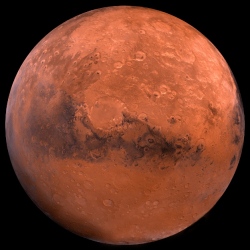
NASA’s Curiosity rover has detected methane on Mars, a gas that could hint at past or present life on the planet. The robot sees very low-level amounts constantly in the background, but it also has monitored a number of short-lived spikes that are 10 times higher. Methane on the Red Planet is intriguing because here on Earth, 95% of the gas comes from microbial organisms.
Researchers have hung on to the hope that the molecule’s signature at Mars might also indicate a life presence. The Curiosity team cannot identify the source of its methane, but the leading candidate is underground stores that are periodically disturbed. Curiosity scientist Sushil Atreya said it was possible that so-called clathrates were involved.
"These are molecular cages of water-ice in which methane gas is trapped. From time to time, these could be destabilised, perhaps by some mechanical or thermal stress, and the methane gas would be released to find its way up through cracks or fissures in the rock to enter the atmosphere," the University of Michigan professor told BBC News.
This, of course, still leaves open the question of how the methane (CH4) got into the clathrate stores in the first place.
